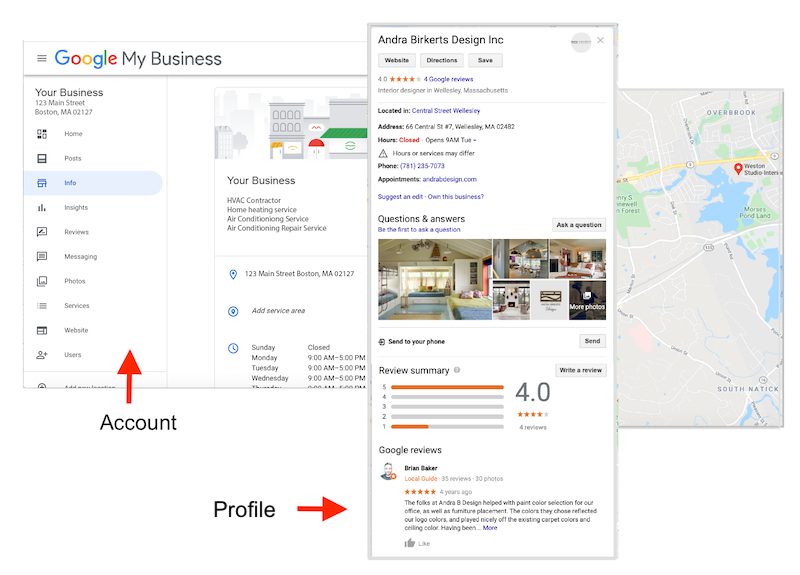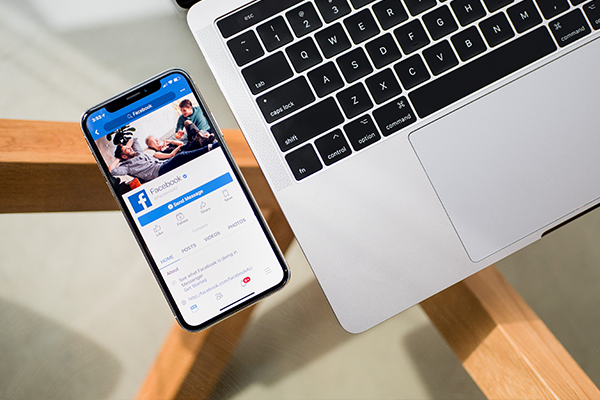There’s nothing quite like going up against incumbents in the world of business. You’ve poured your blood, sweat, and tears into your business and yet you can find yourself completely overshadowed by large retailers with strong brands, at-scale operations, and the resources that you simply don’t have available. It can feel overwhelming trying to compete with these sorts of companies.
We’re here to tell you that it’s possible to do so, even if the odds look like they’re stacked against you. With the right strategies in place, you can leverage the very best of local marketing to win your market, regardless of how big your competitors are.
Sound good? Let’s dive in.
What You’re Up Against

Before we get to some of the strategies, it’s worth walking through some of the key advantages that big box retailers have over you, so you understand the landscape:
- Deep Pockets. Large companies tend to have many more resources than you do which means that they can pour more fuel in the fire to quickly scale their marketing and their operations. They can leverage this financial strength to move fast and throw lots of money at the problem, in ways that you might not be able to.
- Bargaining Power. Big box retailers hold a lot of bargaining power in the marketplace because of the size of orders they tend to place. As a result, they are able to control supplier pricing in a way that you just can’t as a smaller company. They can bully suppliers and get generous payment terms that prove to be very powerful advantages over the long-term.
- Convenience. These big retailers strive to provide as much as possible under one roof which makes it that much more convenient for customers. By stocking frequently purchased items in great numbers, as well as providing a wide range of stock – these corporations tend to be at the forefront of the minds of customers, regardless of how good the products actually are. Convenience is a powerful incentive.
- Lower Prices. The larger a retailer gets, the lower the prices can become because they improve their economies of scale. They have more leverage over manufacturers and distributors and can use that to deliver goods at the lowest possible price to their consumers. This helps to lock in a loyal customer base that can be difficult to break into.
Overwhelming right?
It can feel like they have all the advantages in the world, so how do you actually compete?
Luckily, there are a range of advantages that you have as a small, local company – that you can leverage to make your mark in the industry.
What Makes Local Companies Shine?

For all their size and financial strength, there are a few key weaknesses that big box retailers have that can be exploited by savvy local companies. These are the components that are going to allow you to compete and win in highly competitive verticals.
- Meaningful human touch. Big box retailers feel like corporations and they have little to no personal connection to the people that they are selling to. As such, the entire relationship feels completely transactional and it lacks the human touch. A local company can provide a more meaningful purchasing experience that celebrates the customer and gives them a buying experience that far outstrips what’s possible with a big retailer. This works wonders because we are social creatures at our core, and this personal touch speaks to us on an emotional level.
- Customer Support. Local companies have the ability to deliver much more consistent and comprehensive support to their customers because they are that much smaller. With the right team in place, you can ensure that you’re always there for your customer throughout the purchasing journey – giving them the personalized help and support that they need. This is much more meaningful than going through the corporate emails, call-centers, and unresponsive support channels of big box retailers.
- Better Staff. When you work for a local company you are much more connected to the business and that makes a big difference in the kind of staff that you can attract. With the right mission and working environment, you can hire amazing people that care about the industry on a deeper level. Train them right and you’ll find yourself with more reliability and less churn on an organizational level which helps you to gain momentum as a company.
- Better Curated Products. Local companies don’t have to go through as much bureaucracy as big box retailers do and so they can bring unique products to the market much more efficiently. Through careful curation, you can deliver really exciting products to your customers that might not have made it into a large retailer.
- Higher Quality. When you have a local company, you are entirely responsible for the quality of products that you sell. This means that you can set very high standards for yourself and ensure that everything you create is of the highest quality. This is different to big box retailers who are operating at scale and just can’t have that same quality assurance because there are so many more players in the value chain. Quality is something that customers really value and you can dominate that as a local company.
- Agility. Local companies can move much faster than the incumbents because there are less steps to go through when making a decision. This agility is worth its weight in gold because you can take risks and learn from them much more effectively than you can in a big organization. You are also able to adapt to changing market circumstances quickly and precisely – giving you a significant advantage in the marketplace.
Those are just a few examples of the advantages that local companies have when it comes to competing with the bigger players. If you can leverage these, you can make a big dent in your vertical and throw the cat amongst the pigeons.
However, none of this matters if you can’t get people into your funnel or if the bucket has holes in it. You need to have the right marketing strategies and tools in place to get your offering in front of your customers, before these particular advantages start to pay off.
The Foundational Pillars of Good Local Marketing
The following best practices are key to unlocking the magic of local companies. If you can follow these effectively, you’ll make it much easier for potential customers to find your business organically – which will then lead to better engagement. We want to use these strategies to optimize the buyer journey and make it easier for people to give you their business.
Google My Business Optimization

Whether you like it or not, Google remains the behemoth when it comes to your online visibility. And that’s where your customers are spending time, so you want to make sure that you’re doing everything you can to optimize how Google presents your business to those that are searching.
The key component here is to make the most out of your Google Business listing. This is the official company details that will show up when people search for you – and you want to be as professional and comprehensive as possible here. Some of the main things you should be doing include the following:
- Complete every section of your business profile. Take advantage of every single field so that you aren’t leaving anything on the table. It takes time but it’s well worth it because it will pay dividends long into the future.
- Make sure your contact information is correct. This seems simple but we’re amazed by how many companies make mistakes here. Be meticulous and ensure that your phone number, email and website is correct. When any of these change, be sure to go back to the listing and update them so they are always up to date. Don’t lose leads here, pay attention to the details.
- Control your business description. While Google will try to come up with a suitable description for your business, you can take full control and write a bio that is interesting, compelling, and gives your customers the information they need.
- Select the right category. Google’s algorithm is keyword based and so you want to make sure that your business is categorized appropriately so you can benefit from any contextual searches that can bring your customers. Do some research here and see what your competitors are doing – and then follow suit.
- Have the right attributes selected. Google gives you an option to select attributes that describe some of the functional details of your business. When are you open? Do you deliver? And much more. Take your time to make sure these are correct because they set expectations with customers and you want to take that seriously.
- Upload content. You can add photos and posts to your Google Business profile in much the same way you can on a social media network. By optimizing these and making it a regular content distribution channel you can grow a community around your company which improves awareness and shows that your company is alive and kicking.
- Encourage reviews. Lastly, the reviews on your profile are crucially important. This social proof matters a lot for new buyers and the more you can encourage customers to leave reviews, the better your profile is going to be. These need to be authentic and genuine of course, but when this is done well it can completely transform your business.
All of these are necessary pieces of optimizing your business profile and its worth revisiting this on a regular basis in case any information needs to be updated. It can feel tedious but it makes a big difference to how your company is perceived online.
Website Optimization

Your website is your virtual home and you want to squeeze every last piece of value out of it in order to maximize its visibility online. In order to do this, you should be implementing local SEO best practice in everything that you post – so that you feed the search engine algorithms with the key data that they need to work on your behalf.
Here are some of the important components of local SEO:
- Engage on social media. We’ve seen a significant shift over the past few years with Google placing more and more importance on social engagement when determining a company’s relevance. As a result, you should be prioritizing your engagement on social media channels in order to demonstrate your company’s trustworthiness and social cache. These platforms allow you to build community, engage with your customers, and provide value to the wider industry at large – all of which helps to point more people back to your website.
- Consistent contact information. You want to make sure that you have very clear and consistent ways for customers to get in touch so that there is no doubt or confusion. Google will also see inconsistency as a negative sign – so it’s not something you want to get wrong. Make sure everything is accurate and it aligns – and you’ll put your best foot forward.
- Optimize online directories. There are a range of different online directories that curate and gather key buying information for customers. It’s worth figuring out the key directories in your vertical and make sure that you’re optimizing your profiles there to get the most out of the SEO and build passive, organic traffic that originate from these places.
- Regular SEO Audits. This is not a once-and-done thing. SEO is constantly changing and you want to make local SEO audits a regular part of your operations so that your website is always on the cutting edge. By putting these in the schedule and dedicated the required time to do them well, you set yourself up for success over the long-term.
- Get your internal links right. Your internal link structure is a very underrated part of SEO and its important that you get it right. Take your time to see how your site leads users around and ensure that its logical, valuable, and easy to navigate. This not only improves your SEO from an algorithmic basis but it also improves bounce rate which again tells Google that your site is providing value.
- Optimize your meta data. Every page on your website has its own meta data including the URL, title tags, headers, descriptions, and more. Each of these components feeds valuable data to search engines so you should be looking to optimize them wherever possible. It’s an absolute no-brainer and should be a key part of your content publishing process.
- Create local content. The last piece of this is actually to proactively create local content. Google is all about context and so if you are able to create high-quality local content that speaks directly to your audience, you’re going to find yourself winning on those keywords. The more niche and specific, the better. Do this consistently over time and you can build a really great foundation for all your other online marketing efforts.
This barely scratches the surface of the SEO conversation but hopefully it gives you some of the foundations you need to hit the ground running.
Facebook Page Optimization

The other giant in this space is, of course, Facebook. And as we’ve seen them focus more and more on commerce over time, there has never been a better moment to make sure that your Facebook page is fully optimized.
Here are some of the key considerations you should be thinking about:
- Use a Location Page. Assuming that your local business has a single location, it’s important that you select the right category when setting up your page to get a location-specific page. This allows you to take advantage of Facebook’s targeting features and you’ll be much more relevant to potential customers in your area.
- Use a custom user name. This page is going to become an important digital asset for you and so you want to get a custom username as soon as you can so that you can control the branding.
- Use compelling visuals. Your profile picture, cover photo, and other graphics are what helps your company stand out from the rest, so make sure they are compelling and that they demonstrate your value proposition.
- Focused Call to Action. Facebook will let you create a button with a call to action which can be very powerful when used correctly. Think about the key action that you want prospective customers to take and build your entire page around that objective.
- Integrate with Messenger. You are now able to integrate Messenger with your Facebook Page so that your customers can message you directly. This is very useful in a local business context because you can provide a personal human touch through instant messaging. Have a strategy around this and you’ll get a lot of value out of it.
Facebook pages are constantly changing, so be sure to check in regularly to make sure you’re up to date. And also, remember to engage meaningfully with people who follow you because it can be a wonderful source of leads.
Google Ad Optimization

Now we move onto paid marketing and we’ll start with Google once again. Many local businesses use Google ads to reach their audience but the effectiveness of these ads really ranges across the spectrum depending on how well your campaign is performing.
Here are some of the key learnings you should implement to optimize your Google ad strategy:
- There is very little overlap between paid ads and organic search. If you look at some of the research that has been done into the psychology of search engine users, it’s clear that there is very little overlap between paid and organic results. People tend to go directly to one or the other – so your ads need to have a very specific purpose in order to be effective. They cannot just be another piece of content like you might create for organic search reasons.
- Know when to use them. It seems that if you’re looking to convert search engine users into in-person customers, it’s probably better to stick with organic SEO and don’t let the paid ads get in the way of that. On the other hand, if you’re looking for online conversions then ads are definitely the way to go. Understand your strategy and plan accordingly.
- Don’t overbid when competing with big organizations. As a local company you have to be very careful with your ad budget. If you’re trying to compete with large retailers on competitive keywords, they can drive the price up really quickly. In a lot of cases, it’s better to avoid competing on these ad keywords and instead focus your attention on organic SEO where you can compete on an even playing ground. Bankroll management must play a role here.
As you can see, Google ads should only be used when it makes sense for your company. Don’t just rush into it because it’s supposed to be a great idea. Do your homework and then execute on your strategy accordingly.
Facebook Ad Optimization

Facebook ads can be very powerful for local businesses because of the precision that is possible with their targeting. Once you understand the platform you can get very fancy to only go after those people who are your key target audience.
Here are some of the things you should be thinking about when crafting your Facebook ad strategy:
- Understand your objective. Facebook ads can be used for various reasons and you want to make sure you know what you’re aiming for before you start. Are you looking to increase your Facebook following? Are you looking for engagement on a piece of content? Are you doing a direct sales call with a firm call to action? By being clear on this point, you can then tailor your ad as needed to deliver the value you’re hoping for.
- Choose the right budget options. Facebook will prompt you with some decisions in terms of your ad budget. How much do you want to spend? And over what period of time? Figure out what is reasonable for your current situation and make a choice that’s going to set you up for longer-term success. You can always change this over time but don’t neglect this because it’s a crucial part of making the economics work.
- Avoid ad fatigue. Carefully track the performance of your ad to make sure that you are not bombarding local customers. In some areas you might find that the total pool is smaller than you realized, and you don’t want to be that company that overwhelms people with ads. Try to strike the balance between helpful and annoying and you’ll get much better brand perception in the market.
There’s a lot more we could go into here, but those the key starting points that should help you to get up and running.
Geofencing Strategies

Geofencing strategies can be extremely powerful for local companies because they allow for really interesting use cases in small targeted areas. The idea here is that you can use the location information of your customers to provide highly precise and contextual offers, ads, and communication in real-time.
Imagine, for example, that a customer is coming past your store and all of a sudden, you can offer a discount code on an exciting product in your store. That sort of advertising delivers exceptional value for the customer in a way that is relevant and timely. If you do this well, it can be a huge piece of your local marketing efforts.
The other potential use case is something we call competitor conquest campaigns. This is when we can target people who are currently visiting or who have previously visited local competitors. This gives you the chance to offer a competing offering and win over your competitor’s customers. It’s guerilla marketing at its best.
This is becoming more and more powerful over time and its definitely worth taking a look at it in a serious way.
Conclusion
So, there you have it. If you are able to follow these principles and put them into action – you’ll find that your local company can compete with the biggest retailers out there. It just takes the marketing savvy, perseverance, and a focus on delivering the best possible customer experience.
Focus on the simple things that scale and do them as well as you can. Over time you can expand your operations, but in the beginning its better to use your time to get the strategies right for each piece. When those are running well, you can start to optimize even further.
Whenever you can, try to put yourself in your customers’ shoes and make it as easy as possible for your customers to buy from you. The goal should be to remove as much friction as possible and show just why your offering is such a no-brainer. Do that, and the rest will all fall into place.
We look forward to seeing you beat the big guys! Good luck.


